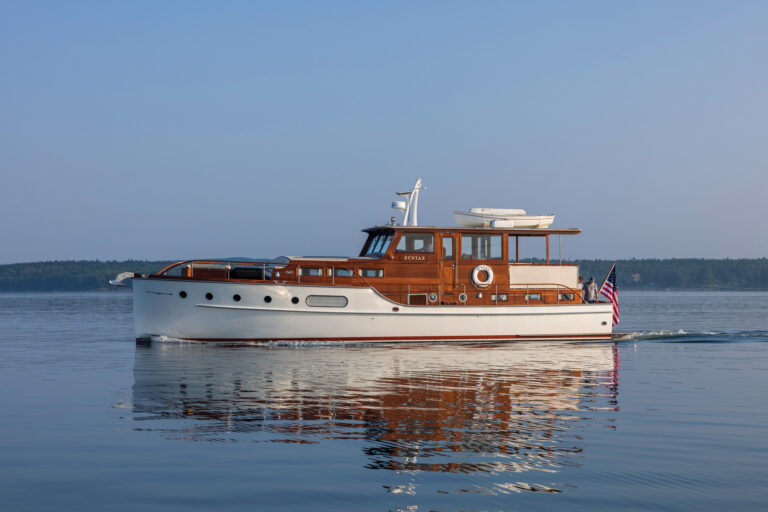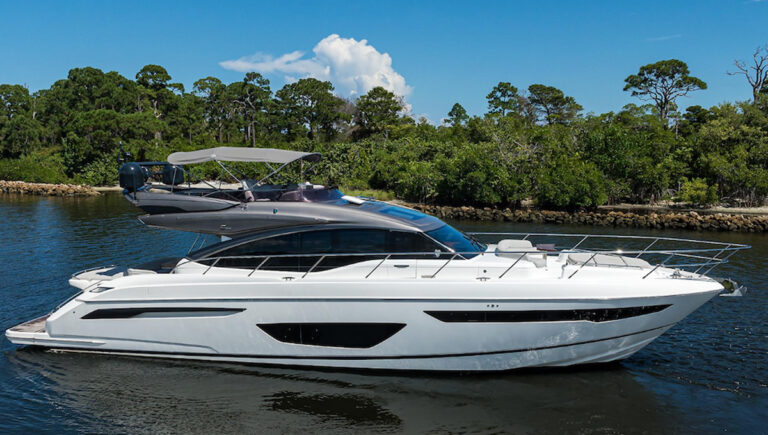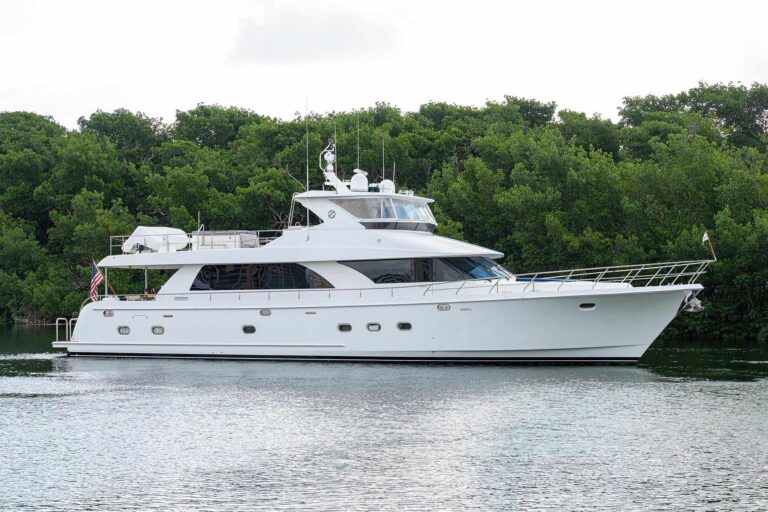Among many good Raymarine chart plotters, the Raymarine RC 400 GPS Chart Plotter proves that you can put a full-function chart plotter in a handheld package, providing you have a reasonably large hand. The 61/2-inch-long, 31/2-inch-wide, and 13/4-inch-thick device weighs just under one pound and is shaped to best fit your right-sorry, southpaws. As a handheld, the RC 400 can operate from its internal batteries or from an external 12-volt DC source, but logic and its very well-designed, swivel base mounting cradle dictate that most users will keep it locked in and drawing operating power from the boat’s electrical system and providing guidance information to the boat’s autopilot. Great designs are a hallmark of Raymarine chart plotters.
The plotter’s WAAS-capable GPS receiver combined with a plug-in Navionics Gold chart cartridge, a fast and responsive operating system, and a crisp, clear display screen provide most of the operational capabilities of the large C-series Raymarine chart plotters. You can navigate by reference to the Navionics chart, establish and navigate to waypoints, navigate routes, follow GPS course guidance, and obtain tide and current information, data about port services and almanac information.
The GPS receiver antenna is at the top, beneath the silvery nameplate. Controls, grouped at the bottom of the front panel, can be manipulated by thumb when the RC 400 is used as a handheld. Seven clearly marked buttons and a four-way cursor pad handle all operating modes. With control logic this straightforward on Raymarine chart plotters, anyone used to operating a recent vintage chart plotter will have no problem making sense of the RC 400’s operating system. The image on the 213/16-inch x 21/8-inch, 320 x 240 pixel color, TFT LCD display screen is easy to see under all lighting conditions and can be used in direct sunlight with no need for power-consuming backlighting.
Operation of Raymarine chart plotters begins with a press of the POWER key. Unless moved from where last used, the GPS will acquire sufficient satellite data for a position fix in a few seconds. After pressing the PAGE key you select the GPS-setup page in order to ascertain the position fix. The GPS-status page displays data for each satellite, identification number, signal strength, use status, azimuth and elevation. The quality of the position fix is shown, including acquisition of a differential fix using data from the WAAS system. The satellite differential (SD-GPS) mode can be disabled when operating in areas where satellite signal reception is difficult, eliminating the repetitive appearance of “WAAS signal lost messages. The relative precision of the fix is shown as the HDOP (horizontal dilution of position), where a figure of 1.0 is ideal. Since all functions of Raymarine chart plotters depend on the reception of good GPS information, a periodic check of the GPS fix status will bring welcome peace of mind.
Although the RC 400 can be put to use virtually out-of- the-box, spend time selecting the desired operating modes and conditions from the system-setup, chart-setup, and track-setup pages. The system-setup menu has 14 topic headings, the chart-setup menu, 19. The track-setup menu for Raymarine chart plotters consists of track on/off, track clear, make track into route, and track interval selection (recording intervals between 1 second and 30 minutes or 0.05 NM to 1 NM). The device can store 1,000 points of track history, 500 waypoints, and 20 routes, each comprised of up to 50 waypoints. There is also a built-in simulator mode.
The RC 400 can operate from its internal batteries or from ship’s power (10-18 volts DC). It will accept either AA-size alkaline cells or rechargeable NiMH cells that are automatically recharged whenever the unit is connected to an external power source. A very small slide switch located adjacent to the chart cartridge must be set to agree with the type of cells being used. Correct setting of the switch is important on Raymarine chart plotters, because allowing the unit’s battery charger to recharge alkaline cells can damage the cells and the plotter. On-screen messages announce the need for recharging and completion of charge, usually accomplished in six hours or less.
The ability of the plotter to seamlessly switch from external to internal power will be useful when it is taken on board the yacht’s dinghy or in the event the ship’s power is interrupted. Backlight and contrast-control access is by a momentary press of the power key. Switching between contrast control and backlight illumination level and setting of levels is via the cursor for Raymarine chart plotters. The system set-up screen provides programmable backlight termination choices ranging from 5 seconds to 59 minutes when operating from internal power. A short “ON setting will maximize battery-power operating time. Pressing any key will restore screen illumination for the programmed time.
The quality and clarity of the on-screen image is the key to any usefulness with Raymarine chart plotters. The RC 400’s LCD is remarkably clear under all conditions, including very bright sunlight. The 320 x 240 pixel count may seem a bit low on a spec sheet, however it is fully adequate in the real world. Using the plotter as a handheld provides a worthwhile advantage in eliminating glare in the most difficult viewing situations. Display orientation can be “North Up, “Heading Up, or “Course Up.
The small size of the RC 400 in no way limits its ability to provide really useful navigation guidance. Yes, the small screen does make planning of long voyages difficult, but I find that paper charts are far better, anyway. List Price for the Raymarine RC 400 is $710, although it can be found for a $599 street price.
Contact: Raymarine, (603) 881-5200; www.raymarine.com.









